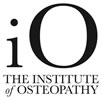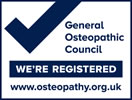The osteopath will take a detailed case history including your current symptoms, general health, accidents and trauma that you have previously suffered, past medical history including illnesses and operations, current medication and any other relevant areas of health. In the case of babies and children the history will also cover details of the pregnancy and birth. It is also useful to bring along your child’s red health record book.
This will be followed by a full examination. The osteopath will assess your posture and where relevant observe how the spine and other joints move. Other tests such as reflexes and blood pressure may also be performed where appropriate.
Using a highly developed sense of touch ‘palpation’, any points of weakness or excessive strain throughout the body will be identified by the osteopath. The osteopath uses their hands to investigate the underlying causes of pain and to carry out treatment using a variety of techniques. These may include rhythmic joint movements, manipulation, soft tissue stretching and massage, and gentle releasing techniques. This can help to reduce muscular spasm, improve circulation, reduce swelling and improve mobility, helping to create a healthier state in which damaged tissue can heal.


